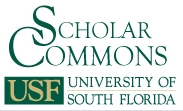Publication Year
2011
Abstract
Changes in nucleotide sequences, or mutations, accumulate from generation to generation in the genomes of all living organisms. The mutations can be advantageous, deleterious, or neutral. The goal of this project is to determine the amount of advantageous mutations it takes to get human (Homo sapiens) DNA from the DNA of genetically distinct organisms. We do this by collecting the genomic data of such organisms, and estimating the amount of mutations it takes to transform yeast (Saccharomyces cerevisiae) DNA to the DNA of a human. We calculate the typical number of mutations occurring annually through the organism's average life span and the average mutation rate. This allows us to determine the total number of mutations as well as the probability of advantageous mutations. Not surprisingly, this probability proves to be fairly small. A more precise estimate can be determined by accounting for the differences in the chromosomal structure and phenomena like horizontal gene transfer.
Recommended Citation
Green, Cedric
(2011)
"Mathematical Analysis of Genomic Evolution,"
Undergraduate Journal of Mathematical Modeling: One + Two:
Vol. 3:
Iss.
2, Article 7.
DOI: http://dx.doi.org/10.5038/2326-3652.3.2.7
Available at:
https://digitalcommons.usf.edu/ujmm/vol3/iss2/7
Creative Commons License

This work is licensed under a Creative Commons Attribution-Noncommercial-Share Alike 4.0 License.
Included in
Advisors:
Acardii Grinshpan, Mathematics and Statistics
Andrei Chugunov, Fortis College: Medical Sciences
Problem Suggested By:
Andrei Chugunov


